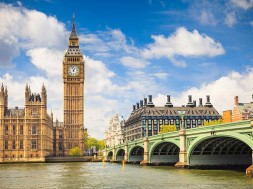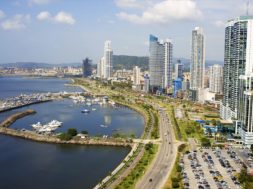You have to crawl before you walk, as the old saying goes. Europe provides an amazing array of travel possibilities. Yet the idea of maneuvering through countries where unfamiliar languages are spoken sometimes raises a mental barrier for folks pondering a first-time visit. A London vacation is a wonderful way to get your feet wet on the other side of the Atlantic.
London is a complex city of 8 million people and 600 square miles. And not everyone speaks English. We recommend condensing a first-time visit to the center of the city. It’s packed with numerous sights of which almost everyone has heard. The areas containing the sights are called Westminster, West End, The City and the South Bank.
The close proximity of many world-famous attractions lends itself to a self-guided walking tour. A popular starting point is on Westminster Bridge, which crosses the Thames River. The Thames runs through London, pretty much east to west, with most of the sights on the north bank. Immediately visible from the Bridge is legendary Big Ben, the clock tower on the north of the Houses of Parliament. Big Ben was originally part of the Palace of Westminster, which burned to the ground in 1834. The Houses of Parliament contain both ruling bodies, the House of Commons and the House of Lords.
Across from the Houses of Parliament and bordering Parliament Square sits Westminster Abbey, a church and venue for royal coronations, funerals, burials and weddings since 1066. A block north in the middle of Whitehall is the Cenotaph, a monument to those who perished in World Wars I and II, devastating events that had a profound effect on modern-day Britain. Farther along the same block sits another world-famous structure, #10 Downing Street, where the Prime Minister lives and works. His chancellor for finance lives conveniently next door at #11.
From #10 Downing Street, a walk of several blocks leads you to the renowned Buckingham Palace, home to the monarchy since 1762. The Queen has opened her home to the public but only in August and September, when she’s away. The Palace’s Changing of the Guard is a major tourist attraction. It happens daily at 11:30 from May through August, and every other day for the rest of the year.
If #10 Downing Street is Britain’s White House, then Trafalgar Square is its Times Square. The name commemorates the Battle of Trafalgar in 1805, in which Britain turned back Napoleon Bonaparte’s French Army. The Square’s centerpiece is a statue of Admiral Horatio Nelson, the one-eyed and one-armed man who led Britain in the battle. Trafalgar Square is a few blocks north along St. James’s Park from #10 Downing.
Two all-star attractions are located across from Trafalgar Square’s northern border. The National Gallery houses one of the greatest collections of European paintings in the world, with more than 2,000 of them. To the right of the Gallery is the steeple of St. Martin-in-the-Fields, built in 1722. It’s one of the world’s most famous non-cathedral churches in the world.
Though a little seedy these days, Piccadilly Circus is another sight known throughout the world. “Piccadilly” comes from fancy ruffled shirts called “picadils” made in the neighborhood years ago. “Circus” comes from the Latin word meaning circle.





